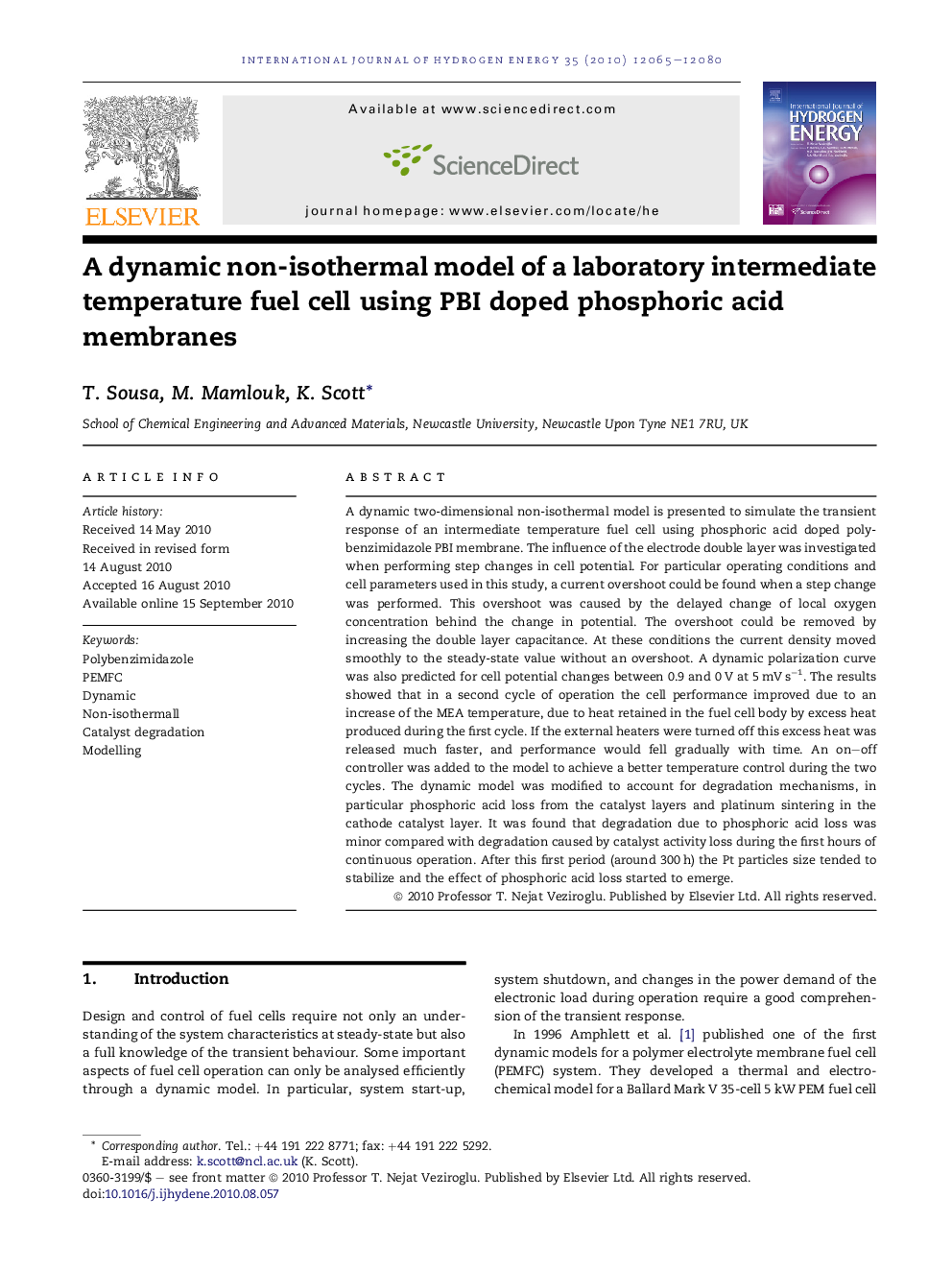| کد مقاله | کد نشریه | سال انتشار | مقاله انگلیسی | نسخه تمام متن |
|---|---|---|---|---|
| 1272575 | 1497596 | 2010 | 16 صفحه PDF | دانلود رایگان |

A dynamic two-dimensional non-isothermal model is presented to simulate the transient response of an intermediate temperature fuel cell using phosphoric acid doped polybenzimidazole PBI membrane. The influence of the electrode double layer was investigated when performing step changes in cell potential. For particular operating conditions and cell parameters used in this study, a current overshoot could be found when a step change was performed. This overshoot was caused by the delayed change of local oxygen concentration behind the change in potential. The overshoot could be removed by increasing the double layer capacitance. At these conditions the current density moved smoothly to the steady-state value without an overshoot. A dynamic polarization curve was also predicted for cell potential changes between 0.9 and 0 V at 5 mV s−1. The results showed that in a second cycle of operation the cell performance improved due to an increase of the MEA temperature, due to heat retained in the fuel cell body by excess heat produced during the first cycle. If the external heaters were turned off this excess heat was released much faster, and performance would fell gradually with time. An on–off controller was added to the model to achieve a better temperature control during the two cycles. The dynamic model was modified to account for degradation mechanisms, in particular phosphoric acid loss from the catalyst layers and platinum sintering in the cathode catalyst layer. It was found that degradation due to phosphoric acid loss was minor compared with degradation caused by catalyst activity loss during the first hours of continuous operation. After this first period (around 300 h) the Pt particles size tended to stabilize and the effect of phosphoric acid loss started to emerge.
Journal: International Journal of Hydrogen Energy - Volume 35, Issue 21, November 2010, Pages 12065–12080